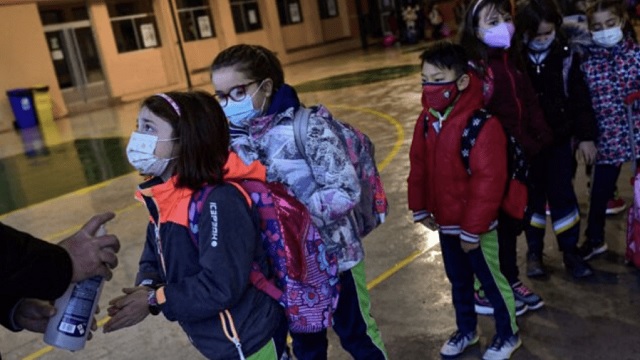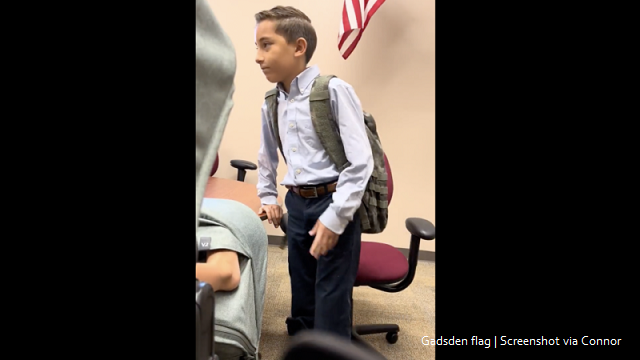A window is opening to show the shameful record of state schools on sexual abuse
By MercatorNet – Navigating Modern Complexities

Australia’s Royal Commission into Institutional Responses to Child Sexual Abuse wound up in December 2017. In five years, it held 8,000 private sessions, held 444 days of public hearing, heard more than 1,200 witness, commission more than 100 research papers, examined more than 1.2 million documents, and generated more than 45,400 pages of transcripts. The final report comprised 17 volumes. It cost A$342 million.
What has become apparent in recent months is that this was not $342 million well spent.
The institution examined most thoroughly by the Royal Commission was the Catholic Church. According to the chairman, Peter McClelland, “of the survivors who came to tell their story 58.6 per cent reported that they were abused in an institution managed by a religious organisation. Of these, 61.8 per cent, or almost 2500 people, reported that they suffered child sexual abuse in an institution managed by the Catholic Church.”
Other denominations, including the Anglican Church, the Jehovah’s Witnesses, and the Salvation Army, were also investigated, but the media focused on some appallingly abusive priests and cover-ups by Catholic Church leaders.
However, sexual abuse in state schools was barely mentioned by the Royal Commission. Media critic Gerard Henderson complained: “the royal commission conducted 57 case studies, but not one covered an existing government school anywhere in Australia. This was a grievous error of omission, especially since [former Prime Minister Julia] Gillard had stated it could inquire into all institutions.”
McClelland penned an indignant response to Henderson. He sputtered that public schools had not been ignored. However, he wrote: “the royal commission conducted case studies in proportion to the number of complaints received about different types of institutions.”
His words show why the Royal Commission was emotionally cathartic, but informationally bankrupt. It was a $342 million exercise in selection bias. The subjects were not chosen randomly and were not representative of the Australian population.
It is no surprise that victims of Catholic institutions were over-represented. Since 2000, articles about abuse by Catholic priests were in the news constantly. The Boston Globe won a Pulitzer Prize for reporting about horrific incidents of abuse in the Boston Catholic Archdiocese. This sparked more journalistic investigations overseas and in Australia. In 2012, the state of New South Wales set up a special commission of inquiry into Catholic sexual abuse in the Maitland–Newcastle diocese. There was a public uproar. Later that year, Prime Minister Julia Gillard announced the establishment of the Royal Commission. In 2015, in the middle of the Royal Commission’s work, Spotlight won the Academy Award for Best Picture.
So sex abuse in the Catholic Church was never out of the headlines. The intense publicity encouraged Catholics who had been abused as children to tell their stories. No wonder they were over-represented in the Royal Commission’s findings. Selection bias was baked into the terms of reference.
It could be that the Catholic Church has been the biggest beneficiary of shining a spotlight on corruption in its institutions. It may have been unfair, but it helped to clean the stables. Almost all allegations which surface in the media today are about incidents which are decades old.
Abuse in state schools
Slowly, now, the spotlight is turning on the state schools which educate about 70 percent of Australian children.
At the end of the month the government of Tasmania will release an eight-volume report on sexual abuse in its schools and institutions. More than a hundred people have already been referred to police and child protection authorities. It closed Ashley Youth Detention Centre recently as a matter of urgency.
Even more disturbing are reports by ABC journalist Russell Jackson about serial sex abusers who ran riot in Victorian schools in the 1960s and 1970s.
Two years ago, Jackson profiled Rod Owen, an AFL star who sank into drugs and drink. Owen had been a student at a Melbourne school, Beaumaris Primary School, when he was molested by a teacher in 1976. That teacher is now facing 26 charges. And it turns out that there had been a cluster of at least four abusive male teachers at Beaumaris Primary. In June, the Premier, Dan Andrews, announced an inquiry – but only into abuse that occurred in the 1960s and 1970s and only at Beaumaris Primary.
The local MP, Brad Rowswell, said that an inquiry into historical abuse at one school was hardly enough. What had become public was “just the tip of the iceberg,” he said. “If the Premier truly means what he says – “We see you. We hear you. We believe you.” – then he will extend the scope of this Board of Inquiry to every Victorian Government school and every Victorian Government school victim survivor. Anything less than this is unacceptable.”
More digging by the industrious Jackson supports the idea of a thorough investigation. He found that there has been a “dizzying number” of civil claims against the Victorian department of education. But only two of the teachers have appeared in court. They each had abused dozens of boys.
All of the issues for which the Catholic Church has been pilloried have emerged from the cesspit beneath the Victorian Education Department. And yet, writes Jackson, “the Royal Commission into Institutional Responses to Child Sexual Abuse did not examine a single case study specific to Victorian Education Department schools. Neither did the Victorian government’s own Betrayal of Trust inquiry of 2013, which probed only religious and non-government institutions.”
Management covering up abuse. Teachers were shuffled from school to school to avoid scandal. “In court many years later, [abusive teacher Vincent] Reynolds would admit that the psychologist had told him his chances of rehabilitation were so low that it would be ‘bloody stupid’ for the department to send him back into classrooms, where he ‘would continue to offend’. But when local police declined to press charges, sending Reynolds back into classrooms is exactly what the Victorian Education Department did. This was the point, Reynolds later told his lawyers, at which he felt he was being granted ‘permission to re-offend’.”
Bureaucratic obstruction. “At first I couldn’t believe how common it was,” John Rule, a lawyer specialising in similar cases. “I tell people the Victorian Education Department are the worst to deal with, and that as far as cover-ups, they’re every bit as bad as the worst bits of the Catholic Church, and people can’t believe it. The cover-up was comprehensive, and they managed to slip through the gaps in terms of inquiries and royal commissions, so they’ve never been properly looked at or had their feet held to the fire. The extent of the problem has never been publicly documented, therefore the Education Department has never had to address it or grapple with it in any way.”
Protecting the image of the teaching profession. For some of the department’s managers, “the most pressing concerns were not the protection of children but guarding the image of the teaching profession and preserving the livelihoods of abusers.”
Shoddy record-keeping. Jackson tried to examine the employment records of teachers in the 1960s and 1970s to assess how many had been dismissed for misconduct or had resigned under a cloud. He found that no reasons were given, and that the managers had falsified reports to the state parliament. “The Victorian Education Department, willingly or not, had spent at least two decades grossly distorting its teacher discipline statistics — distortions that make it impossible to know how many disciplinary hearings and sackings actually occurred.”
Legal warfare. In a tactic for which the Catholic Church was often criticised, lawyers acting for the state government fight every inch of the way to avoid admitting liability. Litigation is a “long, drawn-out, hard-fought, nasty, traumatising thing” for survivors, says Rule.
In short, says one of the lawyers interviewed by Jackson, it’s a familiar story. “The key finding is obvious and doesn’t need an inquiry – the Education Department in Victoria was not that different to the Catholic Church in the disgraceful way it handled abuse issues. It turned a blind eye, it often didn’t believe children reporting abuse, it shunted abusers from school to school and even after abusers faced criminal charges they were sometimes returned to the classroom.”
If endemic historical abuse exists in Victoria and Tasmania, what about the other states? Does Australia need another Royal Commission to do the job that the McClelland Royal Commission failed to do? Judging from this snapshot of one small suburban school, investigating government schools may cost a lot more than $342 million.
But it is necessary to protect Australian children.
A deeply rooted problem
Back in 2016, not long before the Royal Commission wound up, one of the many policy papers it had commissioned politely pointed out its results were bound to be statistically nonsensical. “While thousands of people have come forward to testify in private and public sessions,” wrote the researchers, “it is not known whether these victims/survivors are representative of the population of victims of child abuse, how the prevalence and type of abuse has changed over the decades, or what effect past policies have had in addressing these issues.”
They said that there was “an urgent need for a prevalence study in Australia, which is one of the few developed countries where such a study has not been conducted”.
The Royal Commission came and went, but a prevalence study was finally published in April. The Australian Child Maltreatment Study studied people’s experiences of abuse of all kinds across age groups, from 16 to 65 and over. It found that 28.5 percent had experienced sexual abuse, with girls suffering the most by far. About one-third of that abuse had been perpetrated by “adult family members”.
Even this study, ambitious as it was, fails to give any insight into abuse at schools or other institutions. But it does suggest that focusing only on bad apples, whether they are priests or teachers, is misguided. We have to see sexual abuse as a problem deeply rooted in contemporary culture.
AUTHOR
MICHAEL COOK
Michael Cook is editor of Mercator.
RELATED ARTICLES:
DHS Awards Anti-Terror Grant for LGBTQ Group to Indoctrinate 6-Year-Olds
RELATED TWEET:
Meet DeDe Duffy. A preschool teacher in Cape Coral, FL. She says she teaches her students that if they don’t like their parents, they can find another family.
She also says she teaches them to be gay.
These are the people teaching your kids. pic.twitter.com/e5HJFzMOvD
— Libs of TikTok (@libsoftiktok) September 11, 2023
EDITORS NOTE: This Mercator column is republished with permission. ©All rights reserved.












